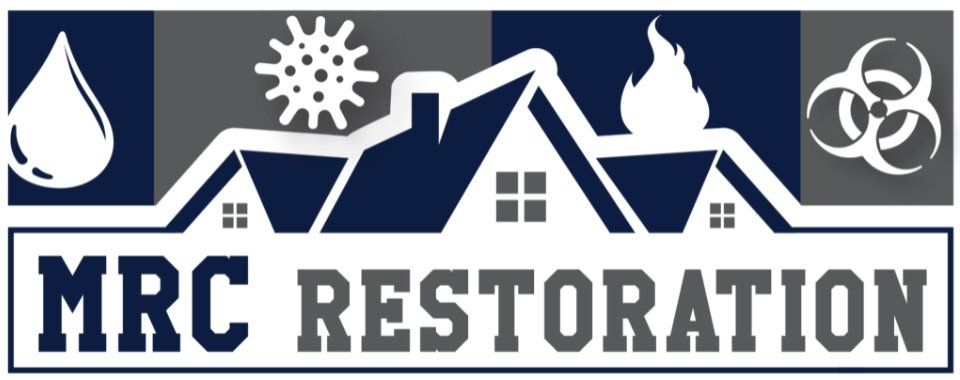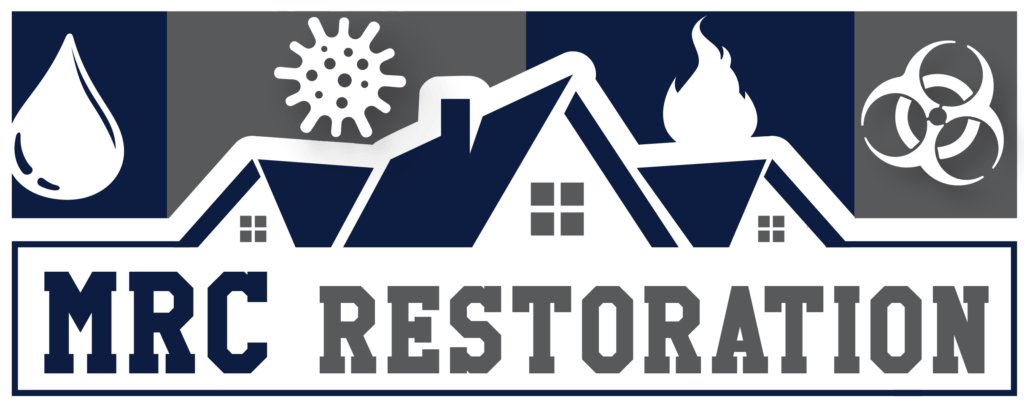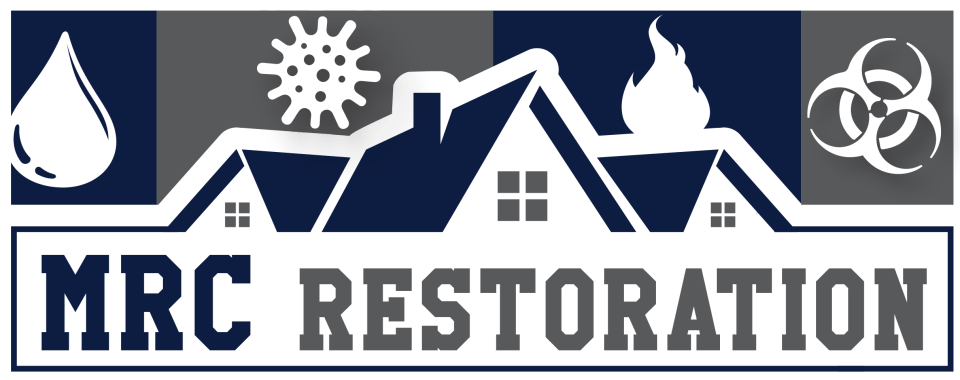Call the Trusted Local Leader Today!
Burst and Leaking Pipe Repair
Water Pipe Burst Cleanup Services by MRC Restoration
When a water pipe bursts or leaks, it's crucial to act quickly to minimize water damage and prevent further issues. At MRC Restoration, we understand the urgency of such situations and are prepared to respond promptly. Our team of licensed and experienced plumbers will assess the situation and take the necessary steps to repair or replace the damaged pipes.
The average cost for burst pipe repair and cleanup can range from $1,000 to $4,000 , depending on the extent of the damage and the complexity of the repair work required. However, at MRC Restoration, we strive to provide transparent and competitive pricing while prioritizing quality workmanship.
Our burst pipe repair process typically involves:
- Locating the Source: Our plumbers will use advanced techniques and equipment to accurately locate the burst or leaking pipe, even if it's hidden behind walls or underground.
- Water Shut-off: We'll promptly shut off the main water supply to prevent further water damage and flooding.
- Pipe Repair or Replacement: Depending on the severity of the damage, our plumbers will either repair the affected section of the pipe or replace it entirely with new, high-quality piping materials.
- Water Damage Mitigation: In cases of significant water damage, our restoration specialists will work alongside the plumbing team to extract standing water, dry out affected areas, and prevent mold growth.
At MRC Restoration, we prioritize broken pipe repair and frozen pipe repair near me to ensure your home or business is restored to its pre-loss condition as quickly as possible. Our commitment to professionalism, reliability, and responsive service sets us apart in the water pipe burst and water restoration industry.

Get A Free Quote
For more information or to schedule service, complete the form below or call us at (573) 315-6143.
Contact Us
We will get back to you as soon as possible.
Please try again later.
Initial Response
A pipe that bursts can release hundreds of gallons of water every hour. This can cause damage to the home and cost homeowners thousands of dollars. It also increases mold risk.
When a water pipe burst occurs, it's crucial to act swiftly to mitigate further damage. The first signs to watch out for include:
- Fluctuating water pressure
- Discolored or rusty water
- Clanging noises in pipes
- Sudden spike in water bill
- Puddles forming under sinks or appliances
Upon detecting these signs, take the following immediate steps:
- Shut Off the Main Water Supply: Locate the main water shut-off valve and turn it off to stop the flow of water and prevent further flooding.
- Drain Faucets and Flush Toilets: Open all faucets and flush toilets to drain any remaining water from the pipes.
- Shut Off Electricity: If water has come into contact with electrical components, shut off the electricity at the main breaker to avoid potential electrical hazards.
- Call a Professional Plumber: Contact a licensed and experienced plumber, like those at MRC Restoration, to properly locate and repair the burst pipe. Attempting DIY repairs can lead to further damage and costly mistakes.
Burst pipe emergency repair requires prompt action to minimize water restoration needs and protect your property from extensive damage. By following these initial response steps and enlisting professional help, you can mitigate the impact of a water pipe burst</primary keyword> and expedite the repair and restoration process.
Cleanup and Restoration Process
After a water pipe burst, swift action is crucial to mitigate damage and prevent further issues. At MRC Restoration, our comprehensive cleanup and restoration process ensures your property is restored to its pre-loss condition efficiently and effectively.Once our team has located and repaired the burst pipe, we initiate the following steps:
- Water Extraction: Our technicians use powerful pumps, wet/dry vacuums, and high-velocity air movers to remove all standing water from the affected areas promptly.
- Damage Assessment and Documentation: We meticulously document the extent of the damage with detailed photos and videos, ensuring a thorough record for insurance claims.
- Content Removal and Disposal: Any items beyond repair, such as water-logged furniture, drywall, or carpeting, are carefully removed and properly disposed of to prevent further contamination.
- Disinfection and Drying: Using specialized equipment and antimicrobial treatments, we disinfect and thoroughly dry all affected surfaces to inhibit mold growth and restore a safe, healthy environment.
- Insurance Claim Assistance: Our team works closely with you to file an insurance claim within the critical 72-hour window before mold growth occurs, providing all necessary documentation and support.
Burst pipe cleanup requires a comprehensive approach to mitigate water damage effectively. At MRC Restoration, our experienced professionals prioritize swift action, thorough documentation, and comprehensive restoration to ensure your property is returned to its pre-loss condition as quickly and efficiently as possible.
Safety Precautions
To prevent water pipe burst and the subsequent water damage, it's essential to take proactive measures, especially during periods of extreme cold. At MRC Restoration, we recommend the following safety precautions:
- Insulate Exposed Pipes: Properly insulate pipes in unheated areas, such as attics, crawl spaces, and exterior walls, to protect them from freezing temperatures.
- Let Faucets Drip: When temperatures drop below freezing, allow faucets to drip slightly to prevent pressure buildup and reduce the risk of pipe bursts.
- Maintain Indoor Temperature: Keep your home or business's interior temperature above 55°F (12.8°C) during cold snaps to ensure pipes remain warm and less susceptible to freezing.
- Thaw Frozen Pipes Safely: If you suspect a pipe has frozen, use a hair dryer or space heater to gradually thaw it before it bursts. Never attempt to thaw pipes with an open flame or excessive heat, as this can cause further damage or even a fire hazard.
By following these simple yet effective precautions, you can significantly minimize the risk of
frozen pipe repair and the costly consequences of a
water pipe burst. Remember, prevention is key, and at MRC Restoration, we prioritize educating our clients on proactive measures to safeguard their properties from water-related disasters.
Frequently Asked Questions
About Burst and Leaking Pipes
-
What can cause a pipe to leak?
Clogged Lines
A clogged line can lead to burst pipes and overflowing. Having clogged pipes with corrosive substances like drain cleaner and household chemicals can potentially speed up the damage to your pipes and be harmful when overflowing back into the home. When you believe you have a clogged line it is always best to call a professional to prevent further damage to pipes and the home.
Sometimes clogged pipes are unavoidable but there are ways to help prevent this from happening. Installing hair traps on your bathroom drains and being cautious of what you put down your drain is the best way to prevent this from happening. Flushable wipes and sanitary napkins are also a leading cause of clogged lines and can be very damaging to your main lines.
Broken Seals
When appliances are installed a rubber sealant is placed around any connection to keep everything watertight. As aging begins sealing can degrade and break over time causing leakage. If you notice puddles around your appliances or condensation you may have a broken seal.
Corrosion
If you have an older home corrosion may be the cause of your leaking pipes. Aging plumbing systems can develop rust and other forms of corrosion that eat away at your pipes creating openings for water to escape. Having imbalances in pH and mineral content in your water may also cause corrosion in your pipes.
Incorrect Pipe Laying
Plumbing systems require water to flow against gravity and not having pipes laid properly and backflow devices used improperly will lead to leaks. Many leaks that lead to emergencies are caused by incorrect pipe laying so if you have any suspicions about your pipes it is recommended to contact a reputable plumber to assess your system and home.
Damaged Pipe Joints
Joints consist of separate curved pieces attaching to straight pipes on either side and are responsible for redirecting water throughout your home. These joints are one the most vulnerable areas in your pipes and often lead to leaks. Extreme temperatures, excessive water pressure, and chemicals can cause joints to deteriorate.
A tip for knowing if you are having joint issues is when you hear ticking or banging from your pipes (especially when running hot water) it is a good indicator that you are having joint problems.
Underground Movements
The growth of tree roots, flooding and even small earthquakes can shift the placement of your pipes. As the ground moves, your pipes can twist, bend, crack or separate altogether – causing underground leaks. If you notice slow draining or problems with your water supply, underground movements (or shifted joinery) could be the issue. To avoid repairs, it is important to hire a plumber to inspect and maintain your underground pipelines.
The most unavoidable cause of leaky or damaged pipes is underground movements. Flooding and the growth of tree roots can damage or shift the placement of your pipes. Tree roots can grow through your pipes and as the ground moves pipes can bend, crack, or even separate causing underground leaks. If you notice ground saturation, slow drainage, or issues with your water supply there is an issue with your underground pipes. It is important to hire an experienced plumber to inspect and maintain your underground lines when these issues begin to occur.
High Water Pressure
Most pipes and faucets can only withstand water pressure up to 60 psi, so even though that high pressure may feel amazing in the shower it could be damaging your pipes. In some instances, high water pressure may lead to pipes bursting in your home. The higher your water pressure the harder it hits the pipes the greater the risk of pipes leaking. If you have noticed a leak or are concerned about your water pressure have a licensed plumber, make any needed repairs and adjustments.
Loose Water Connectors
Due to the shifting and moving of appliances, it is possible for hoses and pipes connected to your appliances to become loose. Moving your refrigerator and causing the ice line to become loose or even the shaking from your washer can spring a leak in your lines. If you notice water forming puddles around your appliances or leaks in the supply line you likely have a loose water connector.
Fixture Cracks
Plumbing fixtures can also become loose or cracked causing leaking. The seals on older fixtures may begin to wear down or physically impact your fixtures causing them to loosen or crack and leak. Also shoving things in the cabinets below sinks can cause damage to the lines and fixtures so be cautious of pipes when putting objects in cabinets with lines in them.
-
How do you know if a pipe burst?
8 Warning Signs of a burst pipe
- Your water smells like Rotten Eggs. This is hydrogen sulfide you are smelling and is a symptom of a leaking sewage system.
- Your water does not look right. Rust particles from a damaged pipe can flow into your water, giving it a brownish coloring.
- Water stains on your ceiling. When a pipe bursts in your walls or ceiling it creates visible water stains.
- Water pressure fluctuates. When water pressure is unstable this may be caused by a burst pipe. The fluctuation can also increase tension on your system causing grinding and clanging noise behind walls leading to more breakage.
- You can hear running water. If you notice hissing or gurgling noises in your walls or hear water running when you don’t have it on in the home these are indicators of a burst pipe.
- The water bill is too high. An alarming spike in your water bill is likely caused by a burst pipe or leak.
- Puddles form under sinks. Burst pipe water seeping through the wall just above pipe cover plates can accumulate and appear to be dripping from exposed pipes.
- Wet Spots or puddles in your lawn. An underground pipe burst can lead to wet spots in your lawn causing sinkholes, foul odors, and weakening foundation.
-
What damage does a burst pipe cause?
Unfortunately, the damage from a burst pipe is not just limited to obvious damage, there are many hidden effects that cause more damage to your home. Here are some of the different types of damage you may experience from a burst pipe.
Rotted out structural materials. Water seeping through walls, ceilings, and floors can cause wooden supports to rot and steel brackets to rust damaging the integrity of your structure.
Mold. Water seeping into porous materials can lead to mold in your home. Mold can even begin to grow in your air ducts, in your walls, and subfloor making it difficult to detect.
Damaged insulation and wiring. Insulation that is saturated with water can lose effectiveness meaning it will need to be replaced. Wet wiring can cause short circuits that could cause damage to your appliances and lighting or even cause a fire.
Porous materials will need to be removed. Wet carpeting, carpet padding, soaked drywall, and other porous materials will need to be removed from the home to dry structural materials to prevent mold growth.
-
What happens when a pipe bursts under your house?
A pipe burst under your home can cause a slab leak under the foundation or concrete slab under your home. These leaks can flood your home causing damage to your sheetrock, flooring, paint, and structural materials. This will also cause an increase in your water bill even a few dollars difference can indicate something is wrong with your plumbing.
-
Does homeowners insurance cover pipes that burst?
Most homeowners' insurance policies will often cover accident water damage that occurs from a sudden occurrence like flooding, burst pipes or storm damage. Repair and replacement of flooring, drywall, structural materials, and even furniture can be covered by your insurance.
-
How much does it cost to repair a burst pipe?
Pipe bursting repair costs $100 to $200 per foot with most spending between $400 and $1,500 total for pipe repair. Water damage clean-up and repair may add additional costs depending on the amount of damage done to the home. This unfortunately is almost impossible to calculate as every situation and home is different and more underlying damages may be found as repairs and cleanup begin.
-
How do I stop a leaking pipe?
It is always recommended to call a professional for replacement and repairs when you have a leaky pipe but here are some tips to help temporarily stop a leaking pipe till a professional can arrive. Also, remember to turn off the water in areas where the leak is before doing any repairs.
Epoxy putty. Make sure you buy the type this is made for pipes and stretch it over the leak and harden it at room temperature. After the epoxy is hardened turn the water back on and check for additional leaks if no leaks are found you have put a temporary fix on the pipes.
Patch and clamp. Find the damaged area and put a patch over it and use clamps to tighten it. Turn the water back on and check for additional leaks.
Pipe Repair Kit with Tape. When applying repair kits make sure you follow directions from the manufacturer on how to properly apply the kit.
Please remember all these fixes are temporary and pipes will still need to be replaced before more damage can be caused.
-
Saint Francois County
- Farmington
- Park Hills
- Bonne Terre
- Desloge
- Leadwood
- Bismarck
- Iron Mountain Lake
- Doe Run
- Terre du Lac
- French Village
-
Jefferson County
- Arnold
- Festus
- Imperial
- Hillsboro
- De Soto
- Pevely
- Herculaneum
- Barnhart
-
Washington County
- Potosi
- Mineral Point
- Caledonia
- Irondale
- Belgrade
- Cadet
- Richwoods
- Shirley
- Tiff
- Blackwell
-
Madison County
- Fredericktown
- Marquand
- Cobalt Village
-
Iron County
- Ironton
- Pilot Knob
- Arcadia
- Viburnum
- Annapolis
- Des Arc
- Glover
- Belleview
- Middle Brook
A Bit About Us
Why Hire Us?
1
Each Crew is IICRC Trained & Certified
2
Recommended by Insurance Providers
3
99.9% Satisfaction Rating
4
Google Rating of 5.0 from 40+ Reviews
GET A FREE QUOTE
When disaster strikes, you need to make sure your home or business is restored back to its original state. Our team of professionals will get to work quickly and efficiently to fix any issues caused by water damage. Rest easy knowing the job is in the right hands with MRC Restoration. Our skilled professionals are here to help you every step of the way. Making your life better is our priority.
MRC Restoration Provides Peace of Mind, in Uncertain Times.
When tough times hit, it's natural to feel overwhelmed. At MRC Restoration, we're here to support you through every step of the journey. We collaborate with your family to evaluate the situation, craft a personalized strategy, and execute it with precision, restoring your home or business to its former glory.

For Both Residential & Commercial Water cleanup, Fire and Smoke Damage Repair & Mold Remediation Services, Call the Trusted Local Leader Today for Your Evaluation!
Service Area
Services
Hours
Friday - Open 24 hours
Saturday: Open 24 hours
Sunday: Open 24 hours
Monday: Open 24 hours
Tuesday: Open 24 hours
Wednesday: Open 24 hours
Thursday: Open 24 hours
All Rights Reserved | MRC Restoration

